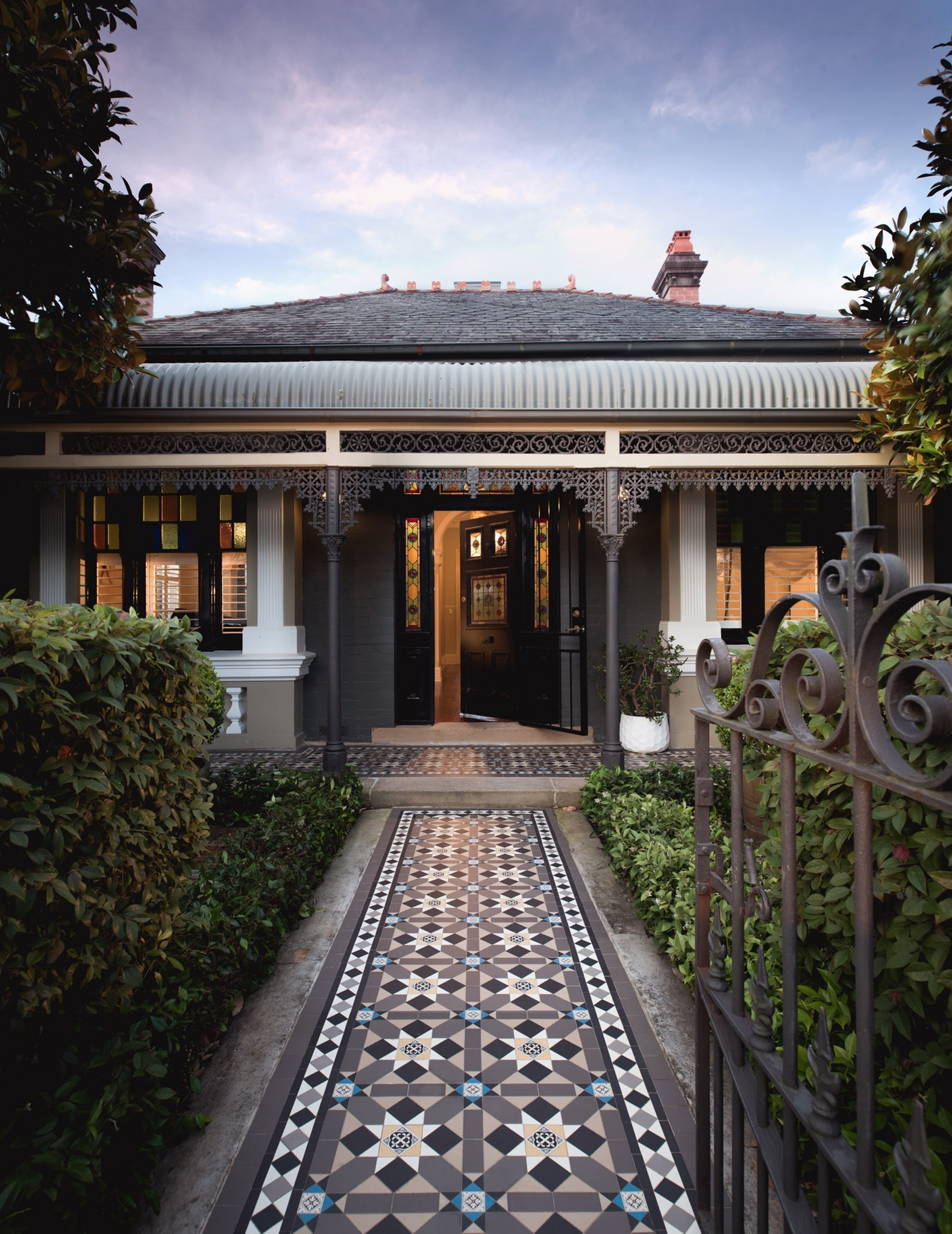Tessellated tiles are the perfect finishing touch for a heritage home – and they can look incredible in contemporary homes too. Here’s how to choose with confidence.
What are tessellated tiles?
Tessellated tiles are loose tiles in different shapes, sizes and colours that are laid in a geometric pattern to create a tessellated floor.
A tessellated floor is made up of three components; the tile pattern itself, a tile border (this frames the pattern), and a tile filler (which acts as a buffer between the border and the edge of the floor). Decorative encaustic tiles and step treads can be used to complete the look of a tessellated floor.

While tessellated floors are a distinctive feature of heritage homes, their striking good looks and virtually limitless design potential makes them a great fit for modern homes too.
Are all tessellated tiles the same?
In a word, no. Tile quality varies and this affects the appearance, performance and lifespan of your tessellated floor.
The best tessellated tiles are made from fully vitrified porcelain, which gives them the strength and superior scratch and stain resistance you need for high-traffic areas such as pathways and steps. It also makes them water-resistant so they’re safe to use in moisture-prone spots such as pool surrounds and bathrooms.
-
Winckelmans Impervious
Material particles are pressed very tightly and fired, meaning water and other liquids have a far more difficult time penetrating the surface. -
Others Pervious
A less dense, non-vitrified tile, results in pockets of air and imperfections, meaning water damage and staining if not sealed correctly.
Where can I use tessellated tile in my home?
You can lay a tessellated tile floor anywhere, inside or outside of your home. Externally, they are a popular choice for pathways, verandahs and pool surrounds. Internally, they can be used to make a statement in kitchens, dining rooms, bathrooms and on fireplace hearths. They are also incredibly versatile and can be designed to suit both straight and curved areas.


Do tessellated tiles only suit heritage homes?
Not at all. With their bold, geometric styling, tessellated tiles make a stunning addition to contemporary architecture too. Growing numbers of architects and designers are using tessellated tile floors to add impact to front paths, hallways, kitchens and bathrooms in modern homes.
The key is to choose the right tessellated pattern to suit the space. For contemporary architecture, you might consider a pared-back palette consisting of two or three block colours, on-trend pastels, a tessellated mosaic floor, or a layout simple in geometry.



How do I choose the right tessellated tile pattern for my house?
There are no hard and fast rules about which patterns and colours you can use where. You may have a Victorian home, but prefer a simple tile pattern to the more traditional look of an intricately patterned floor. Or perhaps you have a contemporary home and love the idea of creating contrast with a heritage-style patterned path or verandah. It’s all about creating a look you’ll love coming home to.

Creating a harmonious look with tiles is less about your home’s architecture and more about choosing colours that compliment the space. When selecting tile colours for a pathway or verandah, for example, consider the colour of your home’s facade, your landscaping and the streetscape. Pick up highlight colours in details such as leadlight windows, fretwork, metalwork and window trims for a cohesive and considered look.
Pick up highlight colours in details such as leadlight windows, fretwork, metalwork and window trims for a cohesive and considered look.
And don’t underestimate the power of contrasts; if you’re looking to make a feature of your tessellated floor, try inverting the colour palette. For a rich brick or charcoal-painted facade, for example, create impact by opting for a lighter-toned tile pattern for your front path and steps.


The same principle applies for your interior; in a kitchen with white-washed walls and joinery, create wow factor with a dark, intricately patterned floor. Or, if you’ve chosen to make a statement in a bathroom or living area with a bold, patterned floor, keep the rest of the space pared-back and simple. For a subtle sense of flow, consider picking up one or two of the tile colours in your soft furnishings, towels or joinery detailing.


How do I choose a tessellated pattern to suit the era of my home?
Australia’s property landscape contains a rich mix of architectural styles, each with its own distinct characteristics and charm. The most common include Victorian, Federation, Californian Bungalow and Art Deco. The colours and finishes you choose for your period home, including floor tiles, play an important role in honouring its original character.
Here’s how to select tile colours and patterns for your heritage home:
Colonial 1788-1840

Heavily influenced by Georgian architecture, homes built in Australia during this period were elegant and restrained in their styling. Proportion and balance were key; mathematical ratios were used to determine the height of windows, for example, in relation to the shape and size of a room.
Originally, most homes would feature no more than two or three colours, such as ochre, charcoal and white. Interiors were generally whitewashed, with pattern and visual texture introduced through wallpaper and simple patterned floors. Roofing was either corrugated iron or unpainted slate and shingles.
Get the Colonial look
Rational, mathematical & sophisticated.-
Monochromatic Colours
Primarily light to dark shades in a desaturated hue i.e. White, Black, Charcoal, Light Grey, Off White -

Explore tessellated stone
Combine stones such as sandstone, marble, slate and granite with tessellated tiles. -
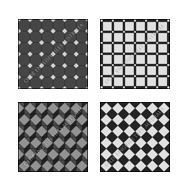
Simple Tessellated Geometry
Patterns were reflective of the era's style: clean, ordered and rational.
Victorian 1840-1890

Early Victorian homes were simple yet formal, and were often made from brick with a corrugated iron or tiled roof. Some featured a weatherboard or stucco facade. Colour schemes in this period were subdued and somewhat rustic.
Mid- to late-Victorian homes were far more ornate, with ornamental brickwork, cast-iron lacework, decorative ceilings, polished timber floors and coloured glass windows making an appearance. When it came to tiles and paint finishes, bold and contrasting colour schemes became popular. During this time, the tile patterns on the front path was often different to the pattern on the verandah.
Get the Victorian Look
Expressive patterns & vivid colours-
Vivid Floor Colours
Components were primarily earth tones, with accents of bold colour and ‘non-earthy’ tones like: aqua, pale green, dark green, pink and mauve. -

Complex Tile Patterns
Complex tile patterns that incorporate multiple shapes and colours as well as a formal border -
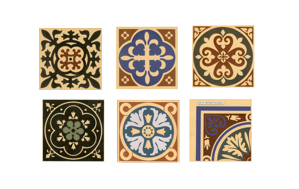
Multi-Coloured Encaustics
This era sees a great deal of Encaustics used in the design of the pattern. Encaustics in this era were often multi-coloured (as opposed to single-coloured in Federation homes).
Federation 1890-1915

Houses from this period often featured a red or dark-brown brick exterior, with ornate timber fretwork and leadlight windows. The influence of William Morris and the Arts and Crafts movement was expressed through the use of natural, earthy colours on walls and floors, such as brown, leafy green and dark grey. Verandahs were important features of Federation homes and often boasted stunning tessellated tile floors. The octagon and dot tile pattern experienced a surge in popularity during this period.
Get the Federation look
Earthy Colours & single-coloured encaustics-
Earthy Colours
Replace vivid colours with Australiana earthy colours and subtle tonal harmony. -
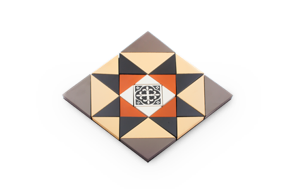
Modestly complex patterns
Slightly less complex than Victorian, with the Octagon & Dot surging in popularity in this period. -
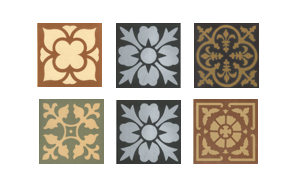
Single-Coloured Encaustics
The use of single coloured encaustics (e.g. black on white) endured well into the first decade, but not multi-coloured encaustics.
Art Deco 1930-1950
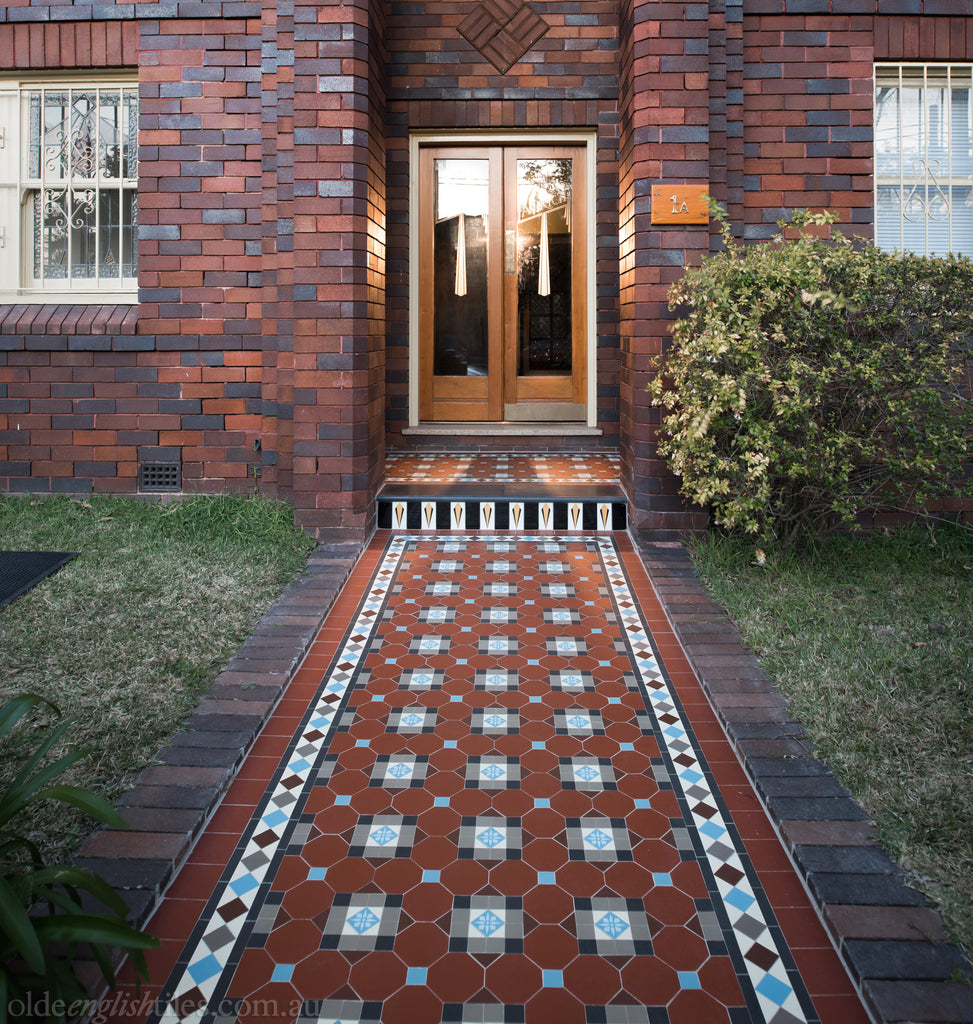
With their curved balconies, porthole windows and pared-back detailing, Art Deco houses were considered very modern in their day. Exteriors tended to be brick, but cement render and stucco were popular too.
Striking, geometric-patterned floors in bold colours such as yellow, black and grey were used to ramp up the glamour factor both inside and outside Art Deco homes - a common feature in hallways, bathrooms, kitchens and front paths. A decorative, contrasting border around the tessellated pattern was also often used for impact.
Get the Art Deco look
Mosaics in classic, elegant colours-
Classic Colours
Colour schemes that embrace hard colours like Yellow, Black, Grey and White reflect the boldness and almost luxurious character of the period. -
Use Mosaics
Mosaic tiles enable the characteristically angled patterns and geometric accents that were so pertintent to the style. -
Embrace Angular Motifs
Motifs such as the chevron, zig zag and stepped forms hark back to this era, and are great elements to any floor or wall Art Deco project.
Californian Bungalow 1915-1940
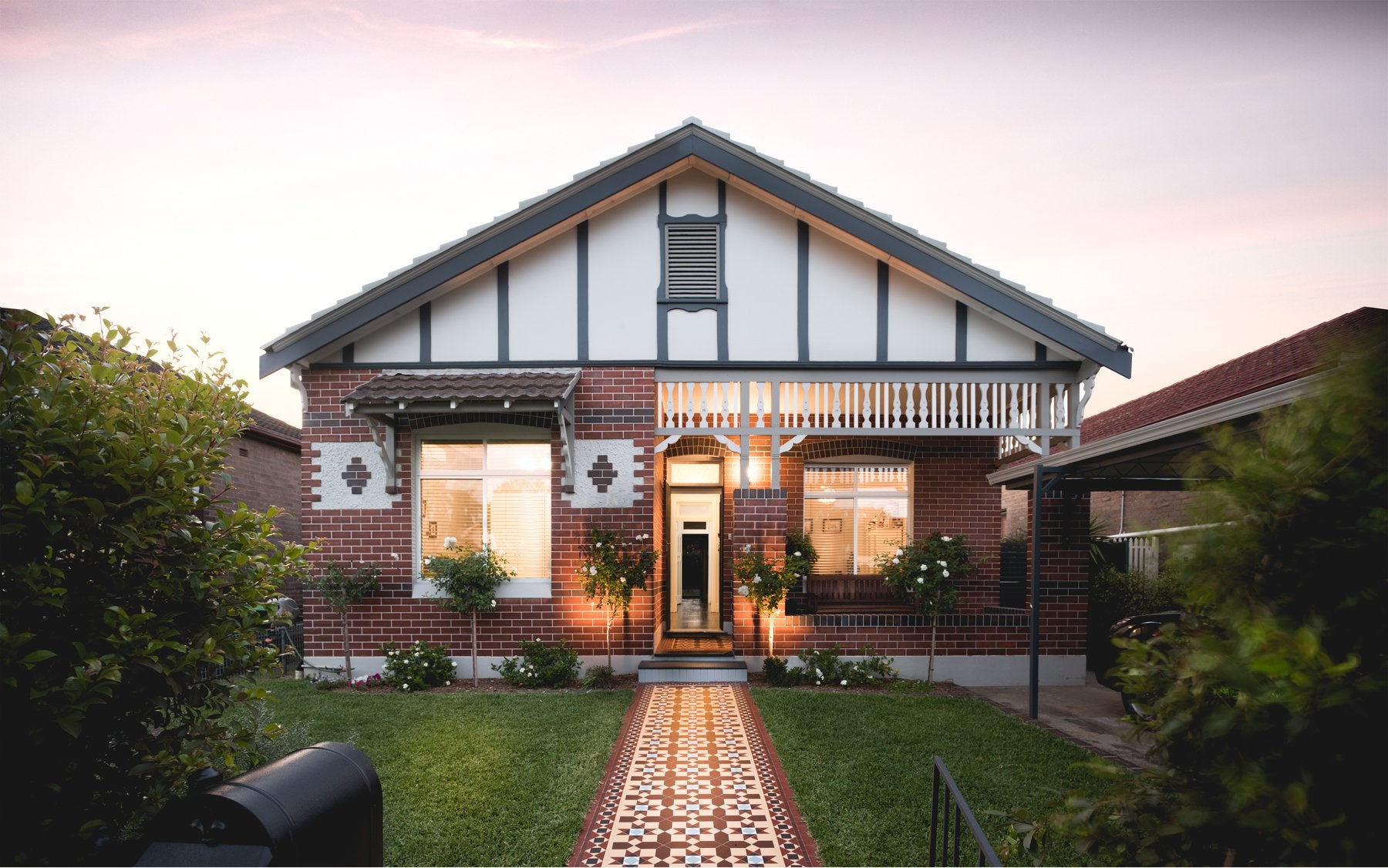
The ‘Cal bung’, as it is affectionately called, is known for its clean lines, earthy materials and open-plan interiors. Californian bungalows are generally brick or weatherboard, and feature colours and materials drawn from nature. They have a simpler, more laid-back feel than Victorian and Federation homes, with a warm-neutral palette and pared-back decorative detailing to match.
Get the California Bungalow Look
Similiar to Federation-
A warm colour palette
Very similiar to Federation – a restricted colour palette of warm, earthy tones to match the signature brick exterior. -
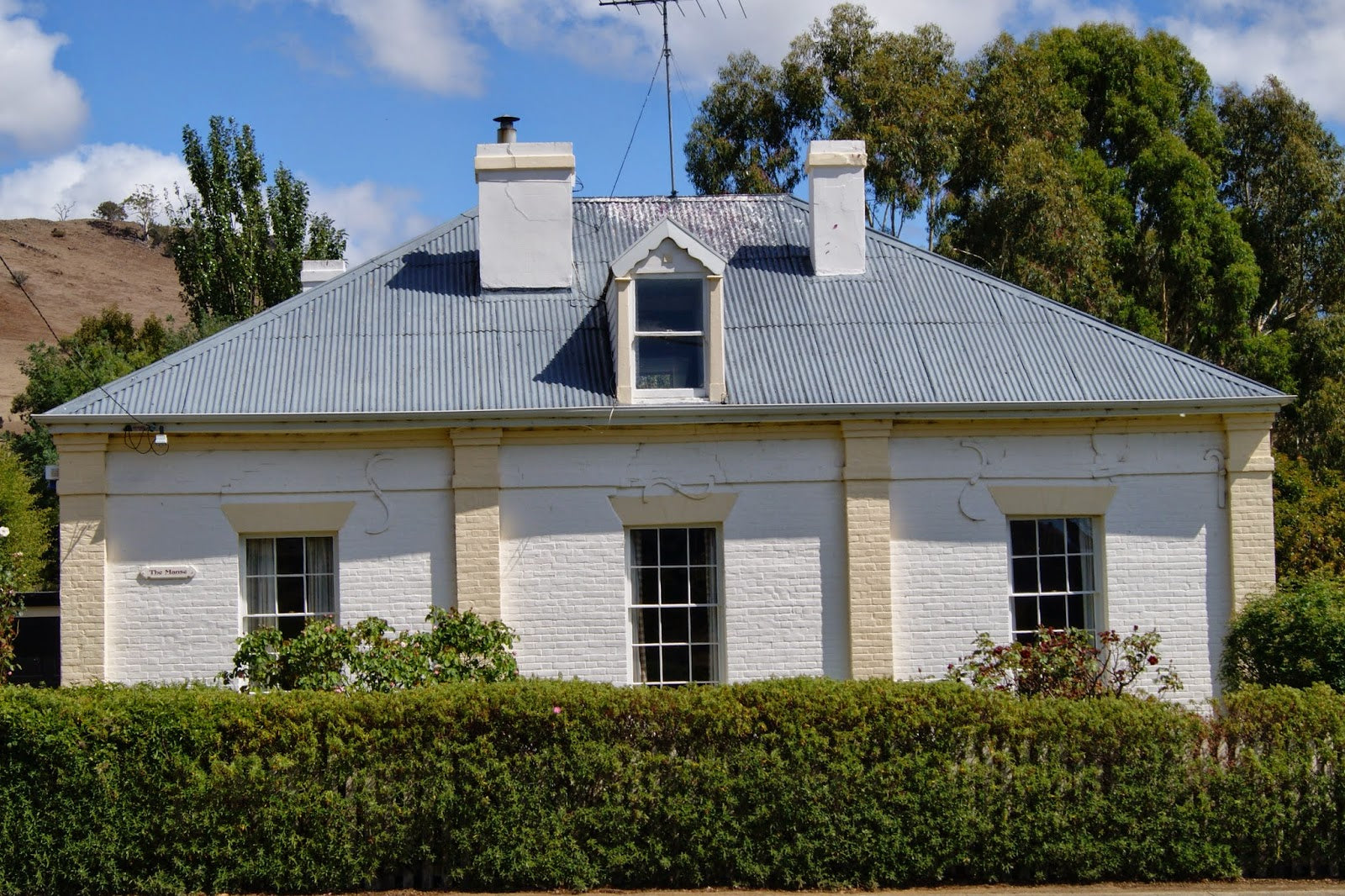
Simple patterns
Minimal pattern geometry, borders and no more than three to four colours -

Single-Coloured Encaustics
The use of encaustics used sparingly (in Cali Bungalow) throughout the design, add pops of flair and character.
Which patterns are available in tessellated tiles?
You can create just about any pattern you like with tessellated tiles – the only limit is your imagination.
At Olde English Tiles, we have multiple tile patterns for you to choose from, ranging from simple and minimalist looks to decorative and complex ones. To help you save time and narrow your search, patterns are curated into collections to suit different architectural periods – Colonial, Federation, Victorian, Art Deco and California Bungalow.
Types of tessellated patterns
These patterns are just your starting point – each one can be customised to suit your home’s palette and style using different tile colours, shapes and sizes. And if you can’t find exactly what you’re looking for, we can create a bespoke tessellated pattern for your home.
How much do tessellated tiles cost?
The cost varies depending on the complexity of the tile pattern and shape – a simple pattern with a few tile shapes is generally less expensive than a very intricate pattern with a border. What you choose will depend on many factors, including your home’s style and your budget.
If you’re renovating your forever home and want to create a spectacular look, you might consider splashing out on a stunning, intricately patterned floor. But if you’re renovating to sell or rent, you may prefer a simpler, more cost-effective pattern.


When calculating the cost of a tessellated tile floor, you also need to factor in the cost of installation. Laying tessellated tiles is an art form that requires many years of experience to master, and you should expect to pay more for a skilled tessellated tiler than you would a standard tiler. The pattern is made up of loose, individual tiles, which are laid by hand to create a seamless, patterned floor – whatever the shape or complexity of the area.
While you might be tempted to skimp on the cost of installation, we really wouldn’t recommend it. The last thing you want is for sub-standard installation to ruin the look of your beautiful tiles or to have to pay for the entire floor to be re-done.
At Olde English Tiles, our head tiler has over 50 years’ experience laying tessellated tiles and has trained almost every tessellated tiler in the industry. All floors are quality-checked by tessellated experts with over decades of experience.

How do I know if my tessellated tiles are being laid properly?
When it comes to the appearance of a tessellated floor, the way the floor is laid is just as important as the quality of the tiles you choose. Tessellated tiling is an artisan skill and only a handful of tilers can do it properly.
Finding a good tessellated tiler isn’t easy and there are several important questions you’ll need to ask before entrusting them with your floor.
When a tiler comes to quote for the job, ask them:
- How many years of experience have they had laying tessellated floors?
- Through which company were they trained as a tessellated tiler?
- What is their general process for laying a tessellated floor?
- Will they screed the floor?
- Do waterproofing?
- Will they supply premium-quality tiles that are resistant to cracking, fading and scratching?
- It’s easy to over- or under-estimate the number of tiles required for a tessellated floor – how can they be sure they’re ordering the right amount?


How do I look after tessellated tiles?
Our tessellated tiles are incredibly easy to care for. They require no sealing and minimal ongoing maintenance. To keep your tessellated floor looking as beautiful as the day it was laid, give it a quick clean every week or two. Simply wipe it with a damp mop, warm water and a small (no more than a teaspoon) amount of detergent. Scrub the floor firmly in a circular motion. Read the full aftercare guide.
Which tessellated tiles do you use at Olde English Tiles?
We use premium-quality unglazed, fully vitrified porcelain tiles for our tessellated floors. Our tiles are crafted in France by Winckelmans, a 120-year old family company recognised as one of the finest tile manufacturers in the world.

Winckelmans tiles come in 35 stunning, heritage colours, making it easy to create an authentic look for your heritage home, whatever the period.
The extremely high vitrification of Winckelmans’ tiles gives them superior strength and scratch and stain resistance. They are impervious to water and have a high slip rating, making them an ideal choice for high-traffic and moisture-prone areas in your home, such as paths, steps and pool surrounds.
At nine millimetres thick, Winckelmans’ tiles measure a full three millimetres thicker than most tessellated tiles you’ll find today. The result? A tougher floor that lasts the distance.
Winckelmans’ tiles have a natural, unglazed finish and a matte appearance – unlike the glossy ‘plastic’ sheen you’ll see in many other tiles on the market. Their full-body colour (the colour goes all the way through the tile) means they will look as beautiful as the day they were laid for decades.
We hope this guide has been helpful in terms of understanding more about tessellated tiles and how can they can be used to make a stylish yet functional impact in your space. If you’re ready to choose a pattern, browse our tessellated tiles today. Have more questions? Get in touch to discuss your flooring vision.

